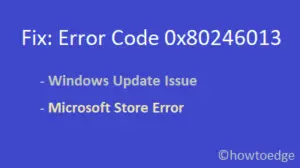Smartphone plays a vital role in fulfilling our day-to-day needs and requirements whether it is an online purchase, download documents, and whatnot. However, in certain scenarios, all we want is to transfer data/ files to the System from Android or vice versa. The simple way to carry out such operations is through a USB cable. But, there are cases in which despite cable plugged into the system, Windows 10 doesn’t recognize Android devices.
There are several reasons that may cause “Windows 10 doesn’t recognize Android” error like- malfunctioning port, worn cables, etc. In fact, there might be software issues as well either on the Smartphone or the PC. Today, in this article, we explore five different workarounds that help to detect and resolve the underlying causes behind this.
Fix: Resolve Windows 10 doesn’t recognize Android device bug
Here, we depict several workarounds that may debug the Windows 10 doesn’t recognize Android device issue-
1} Android USB Device Not Recognized
Before proceeding ahead, make sure that you are eligible to do so. Here are some necessary conditions that you must fulfill-
- Original or OEM USB cable, No damage to the cable.
- Functional USB port – You may switch between the ports to ensure if other ports are working.
- Perform a restart of your Android as well as Windows 10 device as temporary glitches do create some trouble while connecting them.
If you meet the above conditions, perform below steps so that Windows 10 recognize the Android USB device-
- Press and hold the Power button for a few seconds and release the same when you see the Power off menu.
- Next, tap the Power off button to turn the Smartphone off.
- Wait for approx 30 seconds then press and hold the Power button again.
- When the Android reboots, connect it to Windows 10 PC via USB cable.
Windows Device will most probably recognize your device. If not, try the below workarounds-
2} Enable USB Debugging
For the smooth communication between your Android device and Windows 10 PC, the USB debugging should be kept ON. If not, this may cause unnecessary errors. Here’s how to enable USB debugging mode on Android-
- Reach out to the following path “Settings > About phone > Developer options” and turn On the above mode.
What to do if Developer option is not available
- Navigate to Apps > Settings > System > About phone. Here, tap upon the Build number seven times consecutively. The Build number may appear under different names as well for instance in Realme Sets, you need to tap upon the “Version”.

- This will auto-enable the Developer options on your Android device.

- Subsequently, press the back button to head back to the Settings window.
- Scroll down to locate Developer options henceforth turn on the toggle switch next to it.
- Once active, you may enable the USB debugging option as well.
- A prompt will appear instantly, tap OK to confirm.
That’s it, Restart your Android device. You may now attempt to connect your phone to Windows 10 PC via USB cable.
3} Check USB Computer Connection Settings
Whenever you connect your smartphone to Windows 10, make sure to select the option “MTP” i.e. as a Media Device. In general, this occurs automatically. However, if not, you should follow these steps-
- Tap settings “gear icon” by sliding down the main screen on Android.

- On the next screen, scroll down and press the “Storage” followed by the “More” icon.
- Subsequently, choose “USB computer connection” thereafter “Media device (MTP)”.
That’s it, you may now connect your Android device to Windows 10 PC effectively without receiving any bug.
4} Update the related USB Drivers
When you connect your Smartphone to the Windows 10 PC, the OS auto-installs the necessary USB drivers for Android. This is to ensure that the phone works efficiently on your System. However, in a few instances, it may fail to do so. If that’s the case, you must install the correct USB drivers manually to fix this bug that doesn’t recognize the Android device. Here are the essential steps to reinstall the driver on your Windows 10 device-
- Before proceeding ahead, connect your Android phone to Windows 10.
- Succeeding after, right-click on the Start Button and select Device Manager.
- From the list of installed drivers, expand the “Other Devices” or “Portable Devices” option.
- Here, you will find your phone detected as an “MTP” or “Unknown Device”. Make a right-click on this option and choose the “Uninstall” option.

- After the driver is uninstalled completely, Restart your PC and disconnect your Phone.
- Finally, when the System reboots, reconnect your Android device to PC and see if it helps.
5} Wipe Android Cache
The presence of unnecessary cache on smartphones may interrupt as well and hence results in erratic software issues. If that’s the case, you should wipe the cache stored on your device. Here’s how to proceed-
- Press the Power button on your Smartphone to turn it off.
- Next, press and hold the Power and Volume Down button for approximately 5 seconds. Once, you release the buttons, Boot Options will appear on the Display Screen.
- Henceforth, reach out to the Recovery using Volume keys and hit the Power button again to select that particular option.
- Your Phone will immediately restart and launch into the Android Recovery Screen.
- Subsequently, press and hold the Volume Up button for near about 10 to 15 seconds.
- The moment you release your finger, Android Recovery Screen will appear with menu options.
- Succeeding after, tap the Volume down button to hover over the Wipe cache partition option.
- Now, press the Power button to delete the corrupt cache stored on your device.
At last, Reboot your Android device after it finishes wiping the cache. You may now attempt to connect your phone to the Windows 10 PC.
You may like these articles as well-
- Top 4 free VPN apps for Android: Fastest and Reliable
- Enable or Disable Phone Notifications for Android in Windows 10
- How to check the Android notifications on Your Phone App



